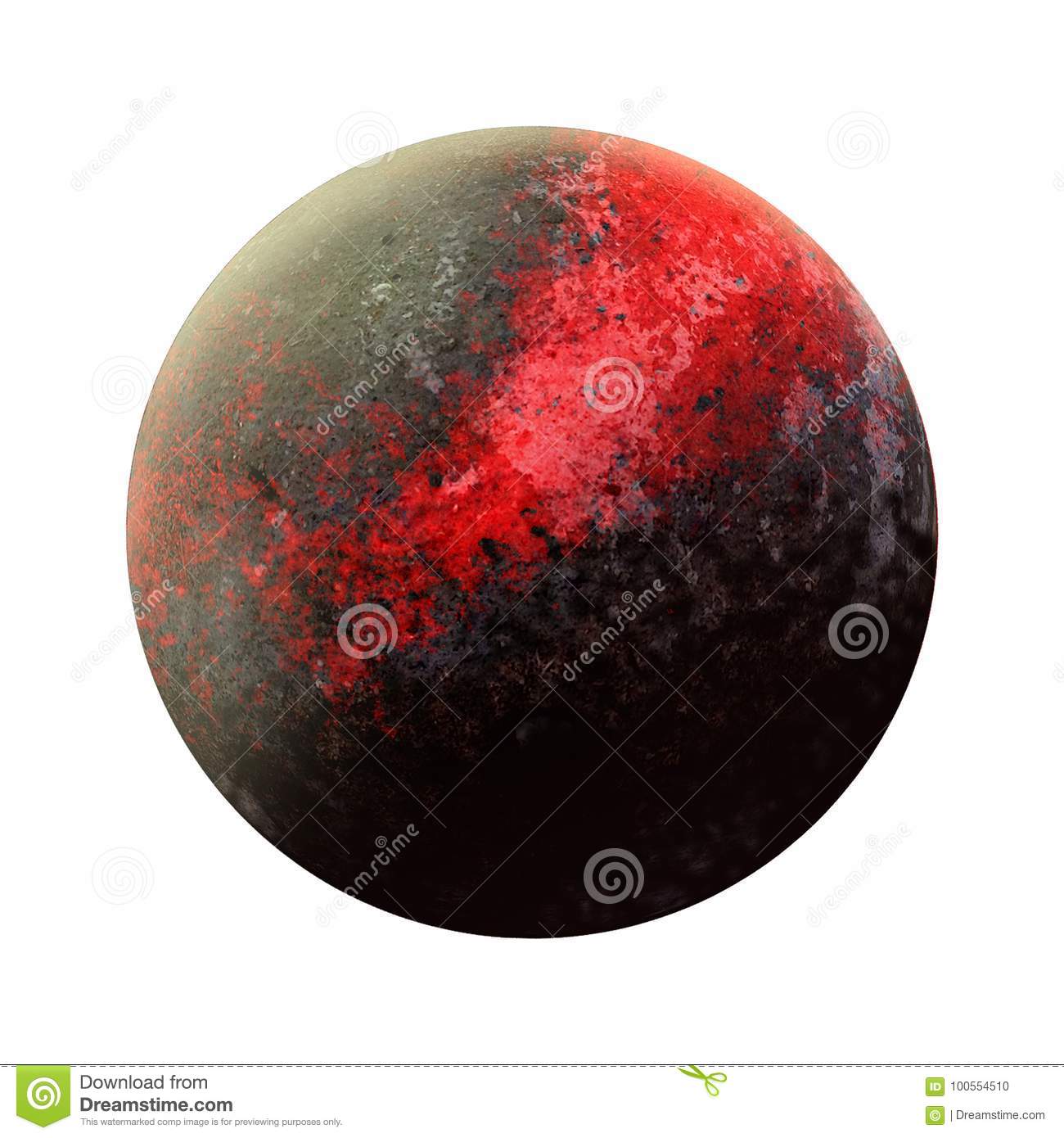
How to find and recognize aliens? Didn't we track them down by accident?
There has been a lot of buzz in the scientific community lately by Gilbert W. Levin, NASA Chief Scientist on the 1976 Viking Mars mission (1). He published an article in Scientific American stating that evidence of life on Mars had been discovered at the time.
An experiment conducted during these missions, called (LR), was to examine the soil of the Red Planet for the presence of organic matter in it. The Vikings put nutrients into Mars soil samples. It was assumed that the gaseous traces of their metabolism detected by radioactive monitors would prove the existence of life.
And these traces were found,” Levin recalls.
To make sure it was a biological reaction, the test was repeated after the soil was "boiled", which should have been lethal to life forms. If traces were left, this would mean that their source is non-biological processes. As the former NASA researcher emphasizes, everything happened exactly as it should have happened in the case of life.
However, no organic material was found in other experiments, and NASA was unable to reproduce these results in its laboratory. Therefore, sensational results were rejected, classified as false positive, indicating some unknown chemical reaction that does not prove the existence of extraterrestrial life.
In his article, Levine points out that it is difficult to explain the fact that, for the next 43 years after the Vikings, none of the successive landers sent by NASA to Mars were equipped with a life-detection instrument that would allow them to monitor reactions later. discovered in the 70s.
Moreover, "NASA has already announced that its 2020 Mars lander will not include life detection hardware," he wrote. In his opinion, the LR experiment should be repeated on Mars with some corrections, and then transferred to a group of experts.
However, the reason why NASA is in no hurry to conduct “tests for the existence of life” may have a much less sensational conspiracy basis than theories that many readers of “MT” have probably heard about. Maybe that Scientists, including based on the experience of the Viking research, seriously doubted whether it was easy to conduct a “life test” with a clear result, especially remotely, from a distance of several tens of millions of kilometers.
Information is based
Experts pondering how to find, or at least know life beyond Earth, are increasingly aware that by finding "something", they can easily embarrass humanity. uncertainty with regard to test results. Intriguing preliminary data may arouse public interest and encourage speculation on the subject, but they are unlikely to be clear enough to understand what we are dealing with.
said Sara Seeger, an astronomer at the Massachusetts Institute of Technology who is involved in the discovery of exoplanets, at the latest International Astronautical Congress in Washington.
There may be uncertainty associated with the gradual and slow discovery process. hard to bear to the public, says Katherine Denning, an anthropologist at York University in Canada.
she said in an interview with Space.com. -
If "potential life" is discovered, many of the things that are available associated with the term could cause fear and other negative emotions, the researcher added. At the same time, she noted that the current attitude of the media to the case does not portend a calm, patient expectation of confirmation of such significant results.
Many scientists point out that relying on the search for biological signs of life can be misleading. If, in addition to the Earth, there are completely different chemical compounds and reactions than those that are known to us on Earth - and this is what is assumed in relation to Saturn's satellite, Titan - then the biological tests known to us may turn out to be completely useless. That is why some scientists propose to put aside biology and look for methods of detecting life in physics, and more specifically in information theory. That's what a bold offer boils down to Paul Davis (2), an eminent physicist who outlines his idea in the book "The Demon in the Machine", published in 2019.
“The main hypothesis is this: we have basic informational laws that bring to life a chaotic mixture of chemicals. The unusual qualities and attributes that we associate with life will not come about by chance.” Davis says.
The author offers what he calls a "touchstone" or "Measure" of life.
“Place it over a sterile stone and the indicator will show zero. Over a purring cat it jumps to 100, but what if you dipped a meter into a primal biochemical broth or held it over a dying person? At what point does complex chemistry become life, and when does life return to ordinary matter? There is something deep and unsettling between the atom and the amoeba.”writes Davis, suspecting that the answer to such questions and the solution to the search for life lies Information, is increasingly regarded as the fundamental basis of both physics and biology.
Davis believes that all life, regardless of its chemical and biological characteristics, will be based on universal patterns of information processing.
“We are talking about information processing functions that can be used to identify life wherever we look for it in the universe,” he explains.
Many scientists, especially physicists, might agree with these statements. Davies' thesis that the same universal information patterns govern the formation of life is more controversial, suggesting that life does not emerge by chance, but simply where favorable conditions exist. Davis avoids being accused of moving from science to religion, arguing that "the principle of life is built into the laws of the universe."
Already at 10, 20, 30 years old
Doubts about proven "recipes for life" continue to multiply. General advice for researchers, for example. presence of liquid water. However, a recent study of the Dallol hydrothermal reservoirs in northern Ethiopia proves that one must be careful when following the water trail (3), near the border with Eritrea.
3Dallol Hydrothermal Reservoir, Ethiopia
Between 2016 and 2018, the Microbial Diversity, Ecology and Evolution (DEEM) team, made up of biologists from the French national research agency CNRS and the University of Paris-South, visited the Dallola area several times. After applying a series of scientific techniques to look for signs of life, scientists finally came to the conclusion that the combination of extreme levels of salt and acid in water bodies is too high for any living organism. It used to be thought that, despite everything, limited microbiological life survived there. However, in recent work on the subject, researchers have questioned this.
The team hopes that their results, published in the journal Nature Ecology & Evolution, will help overcome stereotypes and habits and be used as a warning to scientists looking for life on Earth and beyond.
Despite these warnings, the difficulties, and the ambiguity of the results, scientists in general have considerable optimism about the discovery of alien life. In various forecasts, the time perspective of the next few decades is most often given. For example, Didier Queloz, co-recipient of the 2019 Nobel Prize in Physics, claims that we will find evidence of existence within thirty years.
Queloz told The Telegraph. -
On October 22, 2019, the participants of the International Astronautical Congress tried to answer the question of when humanity will be able to collect irrefutable evidence of the existence of extraterrestrial life. Claire Webb of the Massachusetts Institute of Technology excluded from the analysis Drake Equationsabout the probability of life in the universe was published in 2024. In turn, Mike Garrett, director of the Jodrell Bank Observatory in the United Kingdom, believes that "there is a good chance of finding life on Mars in the next five to fifteen years." .” Lucianna Walkovich, an astronomer at the Adler Planetarium in Chicago, also talked about fifteen years. The already cited Sara Seeger shifted the perspective twenty years. However, Andrew Simion, director of the SETI Research Center at Berkeley, was ahead of them all, who proposed the exact date: October 22, 2036 - seventeen years after the discussion panel at Congress ...
4. The famous Martian meteorite with alleged traces of life
However, recalling the history of the famous Martian meteorite from the 90s. XX century (4) and returning to the arguments about the possible discovery made by the Vikings, one cannot but add that extraterrestrial life is possible has already been discoveredor at least found it. Virtually every corner of the solar system visited by terrestrial machines, from Mercury to Pluto, has given us food for thought. However, as you can see from the argument above, science wants unambiguity, and that may not be easy.

